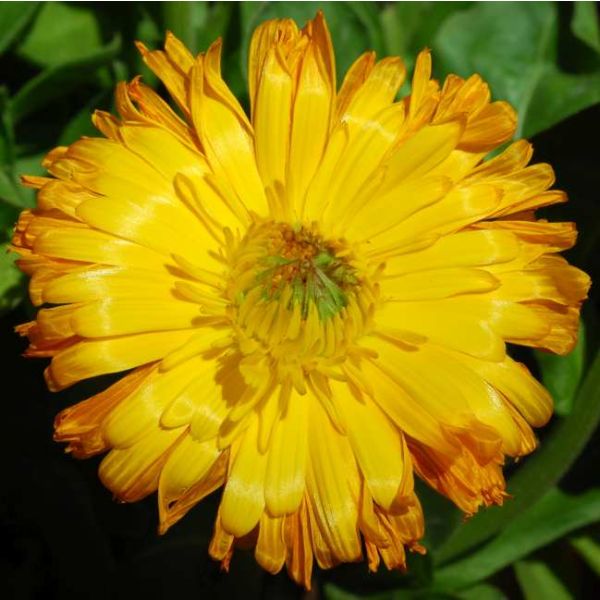Pot Marigold Seeds (Calendula Officinalis)
Pot Marigold Seeds (Calendula Officinalis)
Calendula officinalis (pot marigold, ruddles, common marigold, garden marigold, English marigold, or Scottish marigold) is a plant in the genus Calendula of the family Asteraceae.

Delivery
All orders shipped with UPS Express.
Always free shipping for orders over US $250.
All orders are shipped with a UPS tracking number.
Returns
Items returned within 14 days of their original shipment date in same as new condition will be eligible for a full refund or store credit.
Refunds will be charged back to the original form of payment used for purchase.
Customer is responsible for shipping charges when making returns and shipping/handling fees of original purchase is non-refundable.
All sale items are final purchases.
Help
Give us a shout if you have any other questions and/or concerns.
Email: contact@domain.com
Phone: +1 (23) 456 789
Availability: In stock
SKU
Calendula Officinalis
Calendula officinalis (pot marigold, ruddles, common marigold, garden marigold, English marigold, or Scottish marigold) is a plant in the genus Calendula of the family Asteraceae.
It is probably native to southern Europe, though its long history of cultivation makes its precise origin unknown, and it may possibly be of garden origin. It is also widely naturalised further north in Europe (north to southern England) and elsewhere in warm temperate regions of the world.
| Label | Calendula officinalis |
|---|---|
| Common name | Pot Marigold, English Marigold |
| Family | Asteraceae |
| Genus | Calendula |
| Species | Calendula officinalis |
| Therapeutic uses | Plant pharmacological studies have suggested that Calendula extracts may have anti-viral, anti-genotoxic, and anti-inflammatory properties in vitro. In an in vitro assay, the methanol extract of C. officinalis exhibited antibacterial activity and both the methanol and the ethanol extracts showed antifungal activities. Along with horsetails (Equisetum arvense), pot marigold is one of the few plants which is considered astringent despite not being high in tannins. |
| Germination | Calendula officinalis is widely cultivated and can be grown easily in sunny locations in most kinds of soils. Although perennial, it is commonly treated as an annual, particularly in colder regions where its winter survival is poor and in hot summer locations where it also does not survive. Calendulas are considered by many gardening experts as among the easiest and most versatile flowers to grow in a garden, especially because they tolerate most soils. In temperate climates, seeds are sown in spring for blooms that last throughout the summer and well into the fall. In areas of little winter freezing (USDA zones 8?11), seeds are sown in autumn for winter color. Plants will wither in subtropical summer. Seeds will germinate freely in sunny or half-sunny locations, but plants do best if planted in sunny locations with rich, well-drained soil. Pot marigolds typically bloom quickly from seed (in under two months) in bright yellows, golds, and oranges. Leaves are spirally arranged, 5?18 cm long, simple, and slightly hairy. The flower heads range from pastel yellow to deep orange, and are 3?7 cm across, with both ray florets and disc florets. Most cultivars have a spicy aroma. It is recommended to deadhead (removal of dying flower heads) the plants regularly to maintain even blossom production. Numerous cultivars have been selected for variation in the flowers, from pale yellow to orange-red, and with 'double' flowerheads with ray florets replacing some or all of the disc florets. Examples include 'Alpha' (deep orange), 'Jane Harmony', 'Sun Glow' (bright yellow), 'Lemon' (pale yellow), 'Orange Prince' (orange), 'Indian Prince' (dark orange-red), 'Pink Surprise' (double, with inner florets darker than outer florets) and 'Chrysantha' (yellow, double). 'Variegata' is a cultivar with yellow variegated leaves. Calendulas are used as food plants by the larvae of some Lepidoptera species including Cabbage Moth, The Gothic, Large Yellow Underwing, and Setaceous Hebrew Character. |
| Scarification / Stratification | Pot marigold florets are edible. They are often used to add color to salads or added to dishes as a garnish and in lieu of saffron. The leaves are edible but are often not palatable. They have a history of use as a potherb and in salads. Flowers were used in ancient Greek, Roman, Middle Eastern, and Indian cultures as a medicinal herb as well as a dye for fabrics, foods, and cosmetics. Many of these uses persist today. They are also used to make oil that protects the skin. |
| Price View | Price Range |

